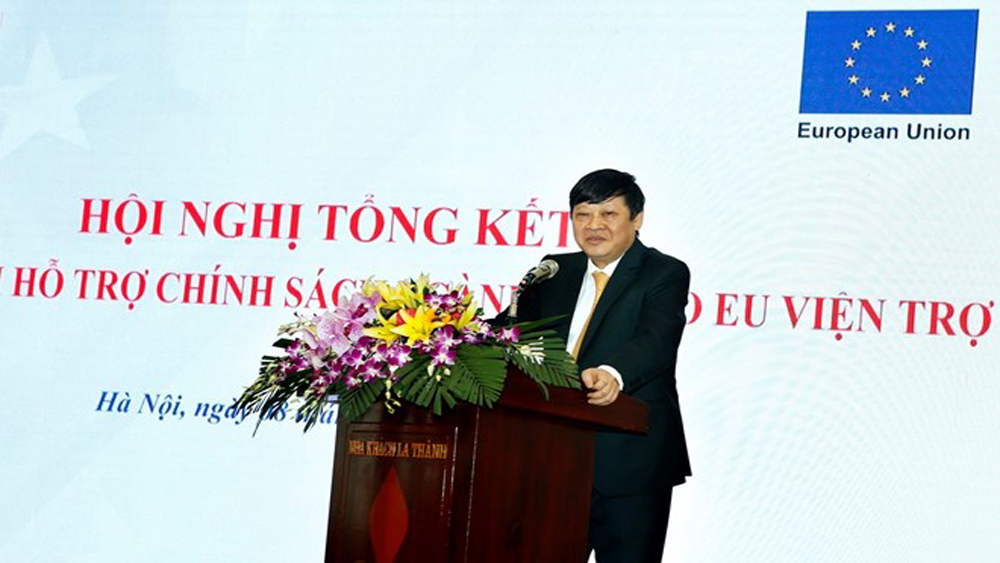EU-funded programme helps improve Vietnam’s health sector
The EU has worked closely and provided significance assistance for Vietnam’s health sector, including the programme which has been performed since 2011.
 |
|
Deputy Health Minister Nguyen Viet Tien speaks at the event. |
With a total budget of up to 3.5 trillion VND (149.8 million USD), the programme has focused on supporting poor localities with a large number of ethnic minority people, with the aims of expanding the coverage of health insurance cards, training medical workers, repairing and upgrading healthcare facilities, supplying basic health equipment, and improving the quality and management of hospitals.
Speaking at the event, Deputy Health Minister Nguyen Viet Tien highlighted the significant outcomes of the programme, saying that it has made important contributions to completing sustainable development goals in Vietnam, promoting universal health insurance, and bettering the capacity to ensure health service quality at all levels.
It also helps Vietnam built action policies of the health sector for the 2016-2020 period, he said and asked the EU to continue supporting the health sector of Vietnam in the third phase of the project.
Beneficiary localities have taken many measures to increase the number of people buying health insurance. To date, most of near poor people have had health insurance with the increasing rate, reaching 88.1 percent. Localities have allocated budgets to coordinate with EU sources for providing non-refundable partial aid or 30 percent of the price of health insurance cards.
In addition, access to services by people has been improved. The number of commune health stations having doctors rises, attracting more and more people to come for medical examination and treatment.
The EU has invested over 1.4 trillion VND to build and upgrade 395 commune health stations in difficult areas; provide medical equipment for district hospitals, helped train health workers; and build satellite hospital networks, contributing to reducing hospital overloading.
Source: VNA
 Bắc giang
Bắc giang













Reader's comments (0)